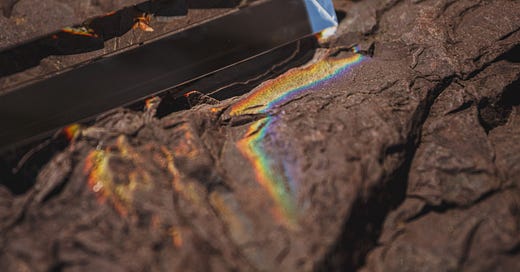A Vignette
On the second morning, I sat down at a table with a group of people I hardly knew. The eagerness superseded any self-consciousness of oversharing too soon with strangers. I animatedly recounted my dream that featured the horror movie character, Chuckie, eliciting gasps and laughter from the others. Thus began the dream table at breakfast at the International Institute for Peace Education (IIPE) in 2022, which took place at Casa Xitla in Mexico City.
We, the co-authors of this article, Minna and Stephanie, met on the first day at the 2022 IIPE Mexico. Our relationship deepened and grew through the spontaneous emergence of the dream table. We believe that all learning is relational, and feel it is important to begin our article by naming our relationship to each other and our respective and collective relationships to dreams.
I (Stephanie) have been writing down my dreams since I was a teenager. No one taught me to do this, and no one I knew actively worked with their dreams- it was more of an impulse and a fascination, a way of honoring what felt like gifts when I woke up in the morning. I found that the more I wrote them down, the more I could remember, and I have developed this relationship over decades. I later studied community dreamwork as part of my doctoral coursework in Depth Psychology at Pacifica Graduate Institute. At IIPE, when Minna came to breakfast and said, “I had a wild dream last night! Does anyone work with dreams?” I was excited.
I (Minna) grew up hearing my mother and her friends share about their dreams, at times in hushed earnest and at other times in utter delight. In my Korean ancestry, dreams hold wisdom that are not accessible in the waking-state. My mother’s dream of three korean peppers, two green and one red, were interpreted by my aunt as two daughters and one son; I am the eldest daughter followed by my sister and a younger brother. Ajummas (korean word for married women) coming together for what could be described as an informal Dream Table, is an ancestral practice that simultaneously nurtured deep, meaningful connections and honored the power that emerges from collective wisdom. Today, my connection to dreams is deeply inspired by ajummas. And surely, my ajumma-ancestors must have blessed my friendship with Stephanie, as it continues to blossom since IIPE, ever since that morning we bonded over our shared enthusiasm and appreciation for dreams.
The community dreamwork table began organically on Tuesday when Minna arrived with her dream and lasted throughout the week. There were several participants who joined every day, several who floated in and out, and some who joined later in the week. There was excitement to see who arrived with “material,” and an excitement to both share and listen to one another’s nocturnal stories. Each person who had a dream would share, and we would ask each other questions, like “What did it feel like? What was the emotional tone?” We would make meaning together, and we would also make some thematic connections between one another’s dreams.
The above is an excerpt from our article, Community Dreamwork as Intercultural Peacelearning.
For the last fourteen months, we have been gently, trustingly, and joyfully breathing life into what has now emerged as Prism of Wisdom.
Welcome.
Together, may we be like the prism…
slowing down to bend our assumption about wisdom, so that we may perceive the spectrum of wisdom that collectively call each of us home to our unique multi-dimensionality and interbeingness.




